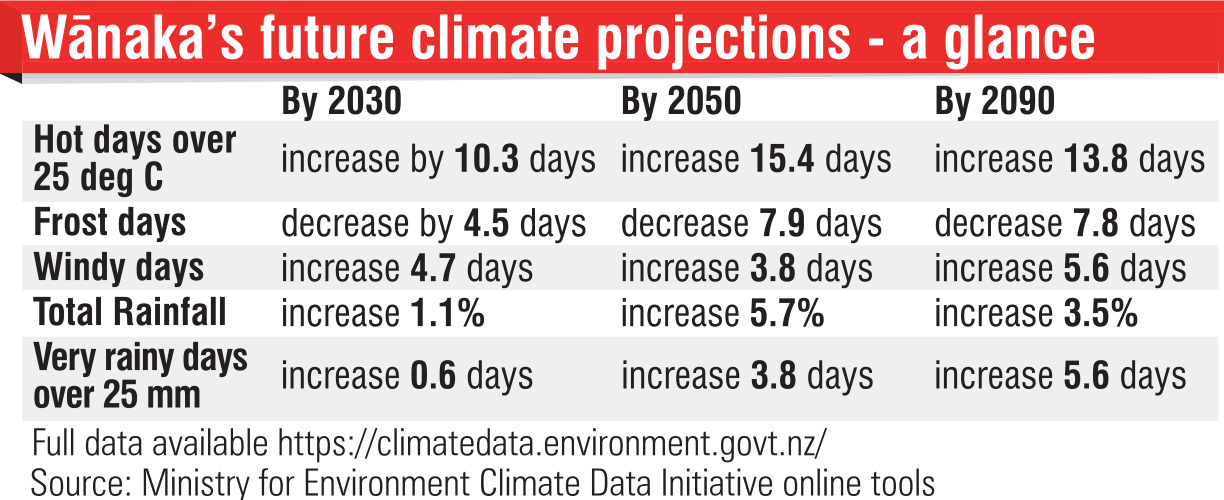
Summit co-founder and session facilitator Monique Kelly knows the conversations can be slanted with a negative bent these days and the complexity of the issues can seem overwhelming.
"More climate-related disasters along with an increasing population can put stresses on food, energy and infrastructure ... While it’s really important to front up to the challenges we’re going to be facing, it’s equally important to start painting the picture of the future we want to see, to feel into what it could be like, and discuss what is possible," she said this week.
While next Tuesday’s conversation between Emeritus Professor of Sociology Dr Paul Spoonley, climate scientist Greg Bodeker, and Cyclone Gabrielle key response leader Emma Horgan-Heke has yet to start, government agencies have already come up with weather projections for the resort.
New national climate data forecasts that between now and 2099, the weather in Wānaka will be become increasingly warmer and windier.
The data also projects Wānaka will have fewer frosts and rainy days — but more very rainy days — by the end of the century.
The climate projections can tell people about change in climate (e.g., how much rain there might be), but not hazards or exposure to risks (e.g., how much flooding the rain will cause, or which homes might be affected by flooding).

The data tools break down climate projections into blocks of 5km square and the information is publicly available online.
Each territorial authority is provided with data addressing three global emissions scenarios developed by the Intergovernmental Panel on Climate Change (IPCC).
These are "sustainability", where warming remains within 2°C by 2050, "middle of the road", which assumes warming rises by 2.7°C by 2100, or "regional rivalry", which assumes the world becomes more focused on national and regional security issues, there is no additional climate policy, CO2 emissions are approximately double from current levels and warming reaches 3.6°C by 2100.
Ministry for the Environment deputy secretary of strategy, stewardship and performance Natasha Lewis said in a recent statement publishing the data meant everyone could access and download it for their own community to assess and understand climate risks.
"This is an important step in improving access to climate information," she said.
The National Institute of Water and Atmospheric Research (Niwa) developed the projections using information on New Zealand’s unique landscape and climate conditions, alongside global data and science.
Niwa chief climate scientist Dr Andrew Tait said the projections were based on the latest global climate models and emission scenarios used by the IPCC.
“Niwa’s supercomputer ran hot for 12 months to downscale the global data.
"The computing power needed is equivalent to running more than 150 high end laptops non-stop for a year," Dr Tait said.
Sustainable Business Council head of climate and nature Antonia Burbidge said climate resilience was a key challenge and the data would have immediate and tangible value for making informed decisions.












